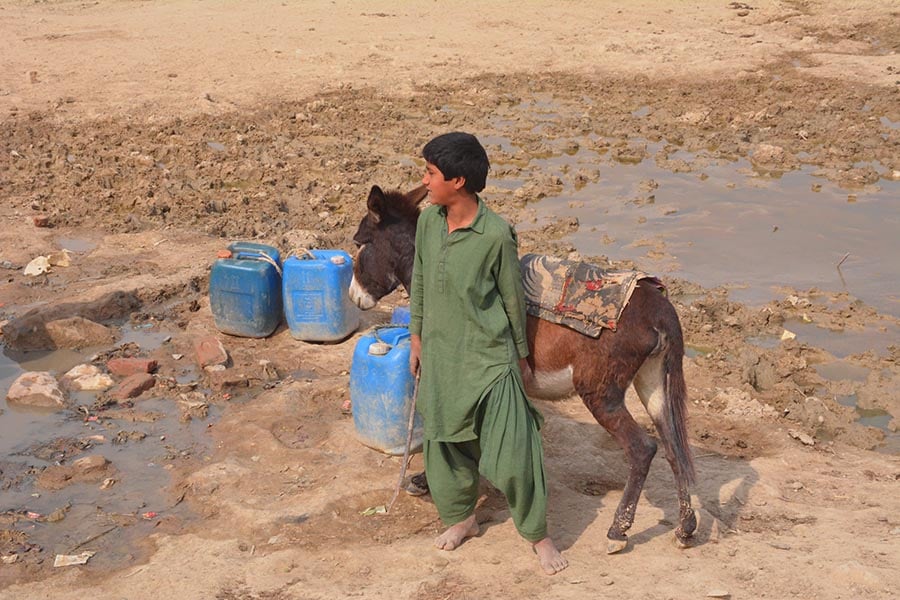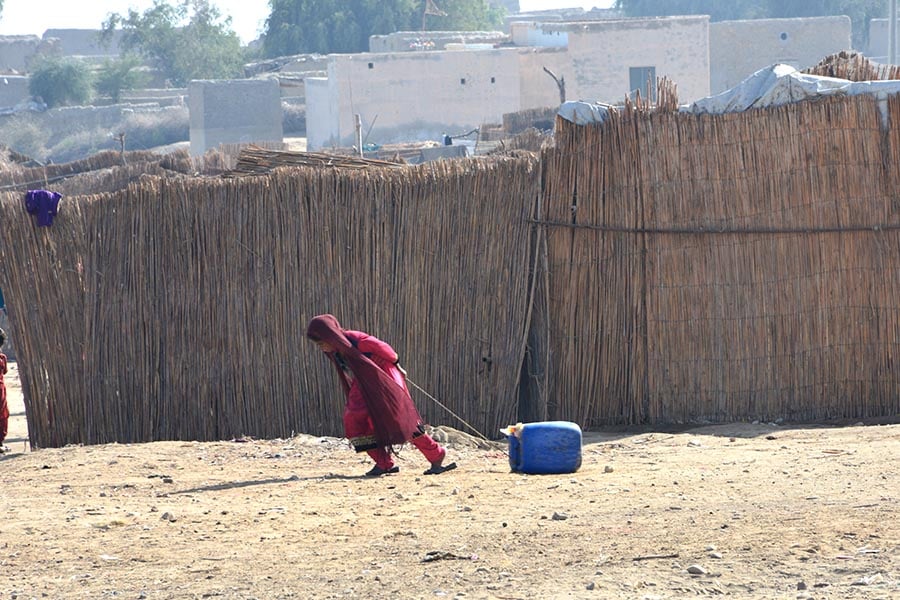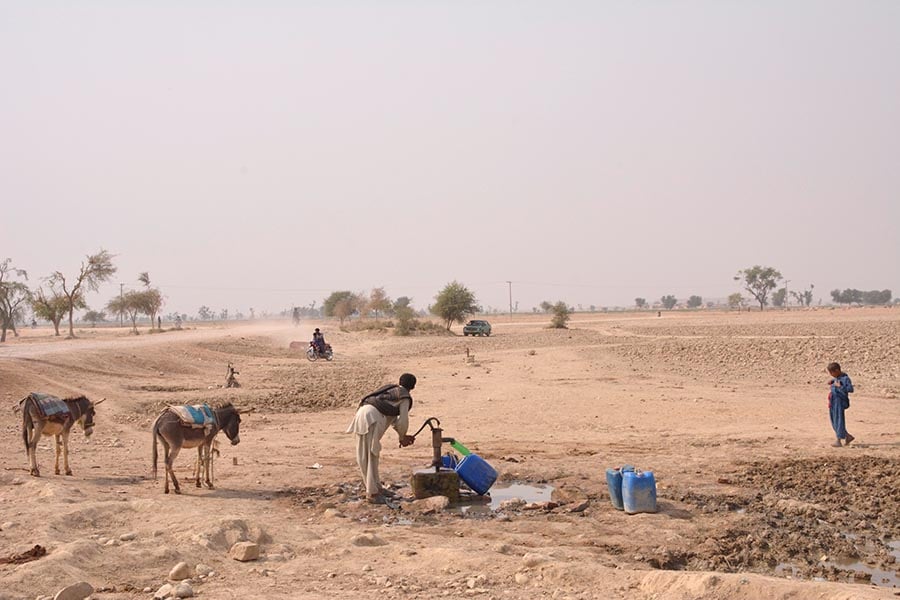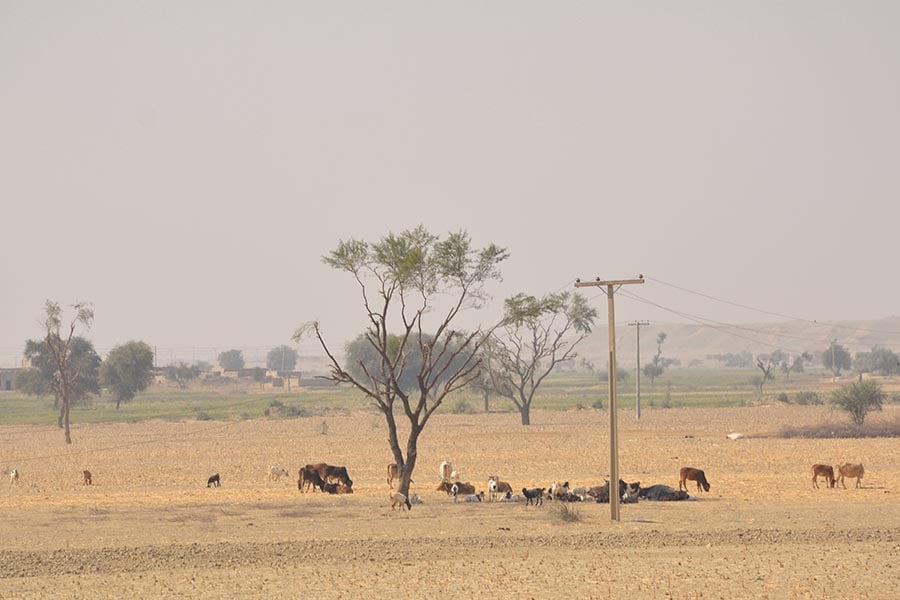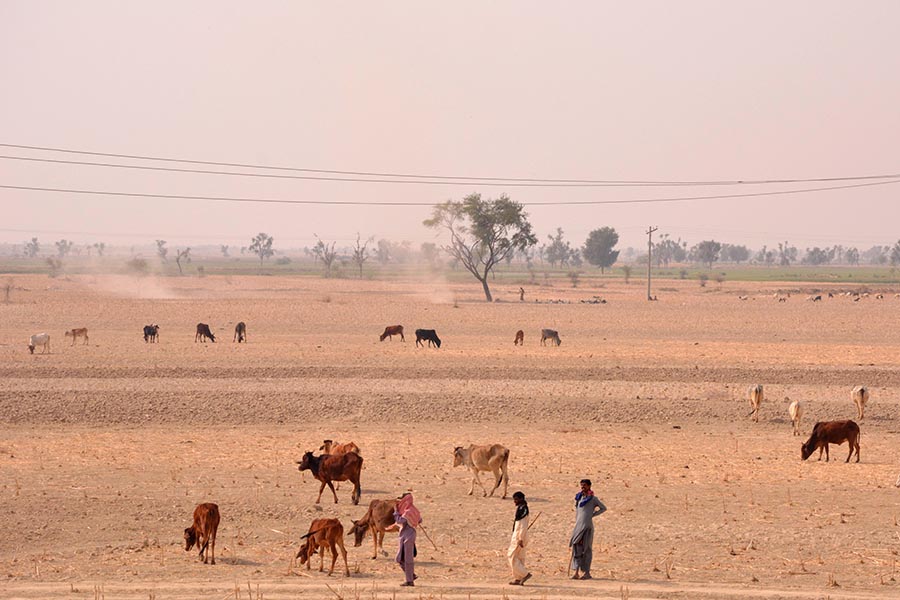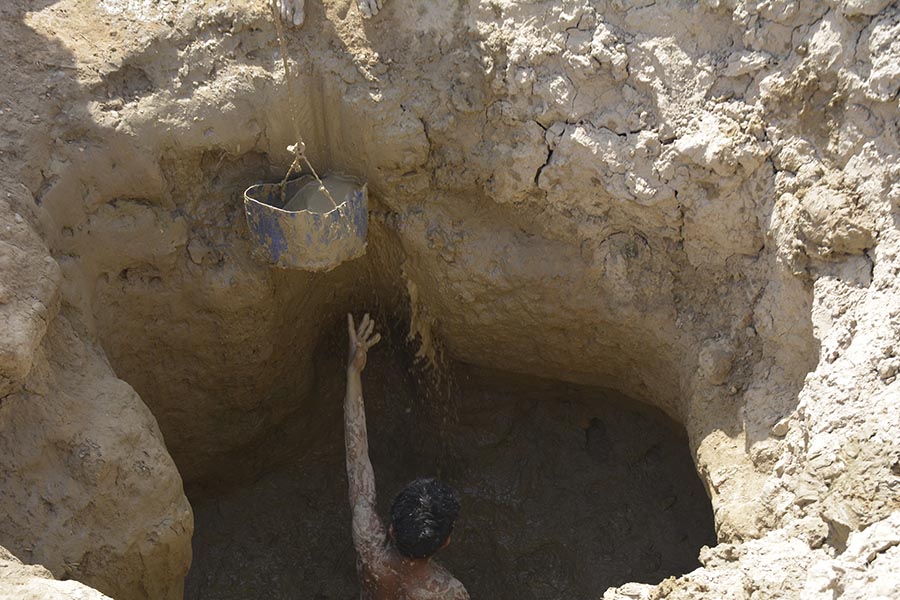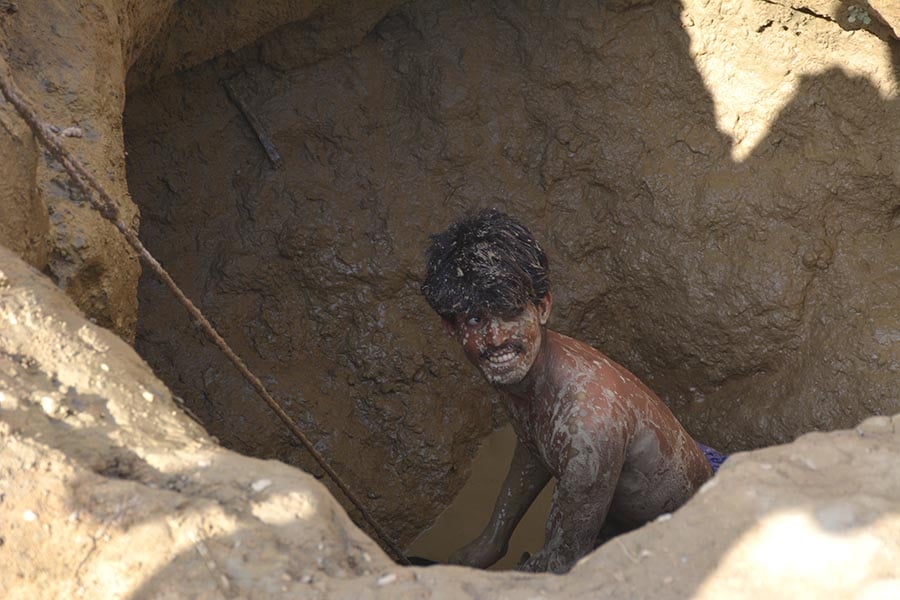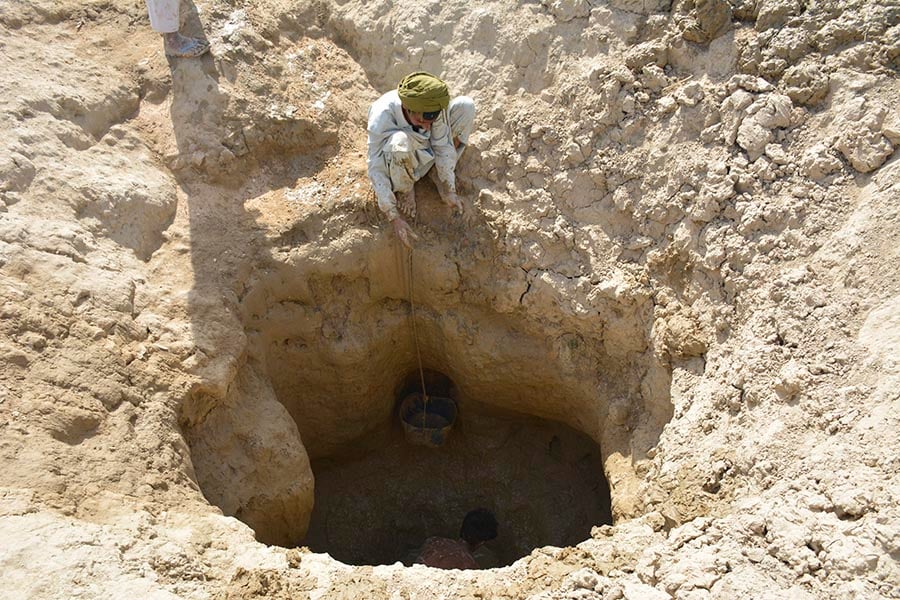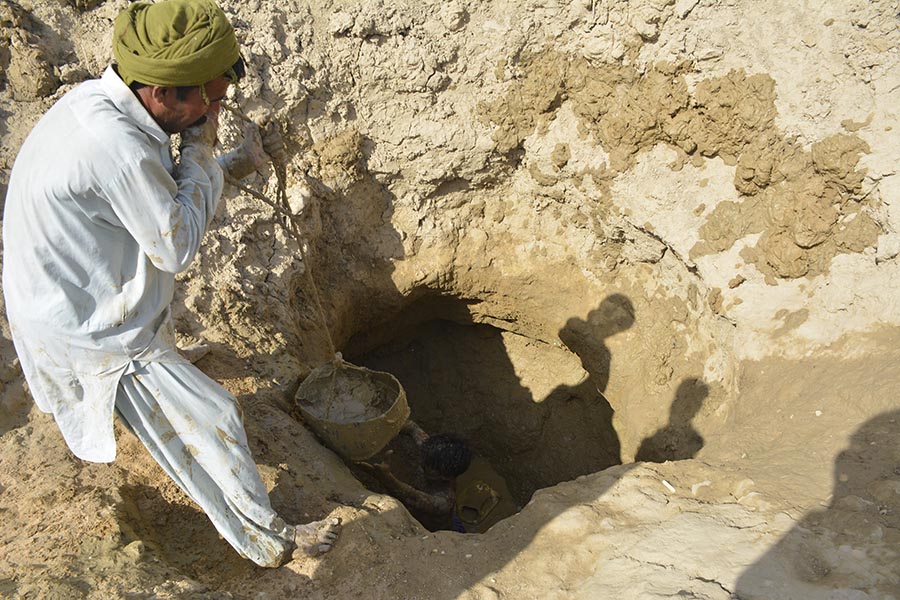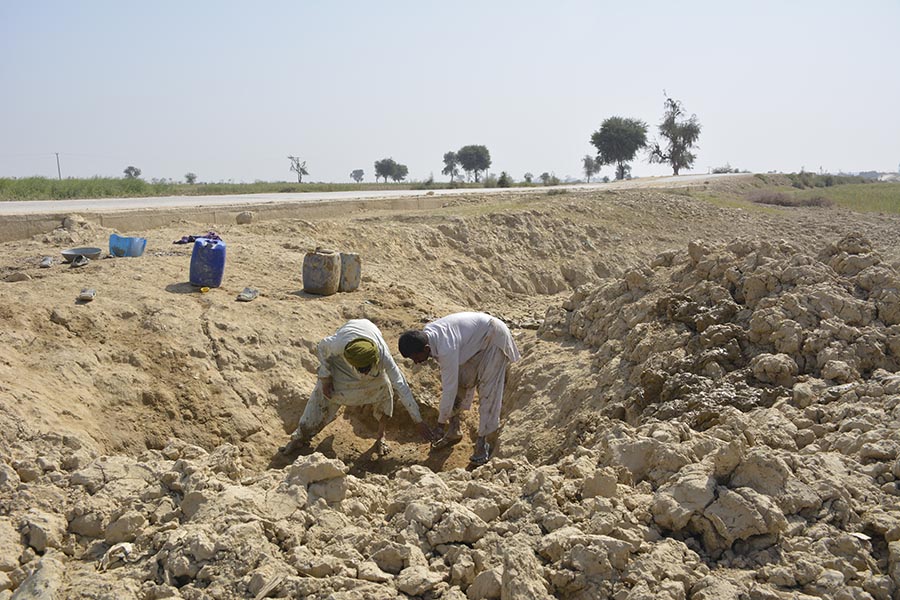Inside a small water well, on a narrow road, a young man is busy digging a ditch. Using his spade, he loosens a lump of mud and then tosses it aside. He does this again and then again, furiously, with the afternoon sun blazing on his bareback. Several hours later, water seeps from the ground. Another man standing outside the well throws him a bucket tied with a rope. The young man fills the bucket with water and then signals to have it hauled up.
Both men belong to Chhini, a tiny village around 27 kilometres from the Johi town of Dadu in Sindh. The village is located in an arid region in the lap of the Kirthar mountain range, which stretches from Jamshoro, Dadu to the Qamar-Shahdadkot district of Sindh, near the Sindh-Balochistan border.
“We desperately need water,” explains Muhammad Achar, the man digging the well, “Our existing well has dried up and even this new one would hardly provide water for the next six months.”
The village and many like it, fall within in the constituency of PS-73, from where Sindh Chief Minister Syed Murad Ali Shah was elected as a member of the provincial assembly in 2014. (This year the Election Commission of Pakistan published a list of preliminary delimitation of constituencies. It is unclear, as of now, if these areas have been reassigned).
In July 2016, Shah, a graduate of Stanford University, was appointed the new chief minister of Sindh by the Pakistan Peoples Party (PPP). The former ageing CM, Syed Qaim Ali Shah, was under heavy criticism for bad governance and incompetence. By putting the younger Shah in office, the PPP hoped to turn that image around. After his appointment, the 55-year-old worked on many development projects in Karachi and other districts of the province. But back in his own constituency, those who voted for him have no access to clean drinking water.
Kachho, an arid area in his constituency, is famous for its many archaeological and historical sites. In the summers, its poor residents are dependent on rain for drinking water. This suffering is not new. The area, and many like it, have been facing an acute water shortage since the last ten years, due to an ongoing dry spell as the region has received less than average rain.
There are few tributaries of the Johi Canal that pass through the region, wherein the past water would spill in from the River Indus. But for past three to four decades these tributaries and canals are now almost silted with mud.
Then there are five hand pumps, installed outside the Chhini village. Four of them have dried up. Only one, donated by a philanthropist, is functional.
Bakhshal, 12, riding a donkey with two jerry cans, has just arrived at the well from his village located 3 kilometres from Chhini. It took the boy three hours to get here. “Sometimes, I have to travel twice a day to fetch water,” he tells Geo.tv, “I spent the entire day travelling back and forth.” Bakhshal does not go to school. “There is a man who sells water on a qingqi, but that is costly. My father has to look after the livestock and I have to bring water, so there is no time for school.”
Another local resident Muhammad Khan says that groundwater lies at around 400 to 500 feet deep. That water, at times, can be brackish and not fit to drink. "When there are heavy rains, the area receives water. Also during the rains, rivulets like Nai Gaaj flow and that increases the groundwater level. It makes the groundwater quality better, but there has been no rain for past many years.”
Then there is the Main Nara Valley Drain (MNVD), which passes through the region. Due to seepage from this drain, people are able to find water at around 20 to 30 feet. “But water from such wells only lasts a few months,” Khan adds, “After which we have to dig another well.”
It is common in this area to see young boys and girls, women and men, carrying pitchers and jerry cans, walking long distances in the scorching sun.
The acute water shortage is also taking a toll on the livestock and wildlife. A large number of people of this region have migrated to other districts of the province.
Mashooque Birahmani, president of the Sujag Sansar organization, an NGO working in the Dadu district, says that though there is no any official data on how many people have been displaced from the Kachho region due to water shortage, the number, however, is expected to be large. “With every passing year the situation is becoming worse,” he warns, “If the government doesn’t do anything, this entire region would be empty in a few decades.”



